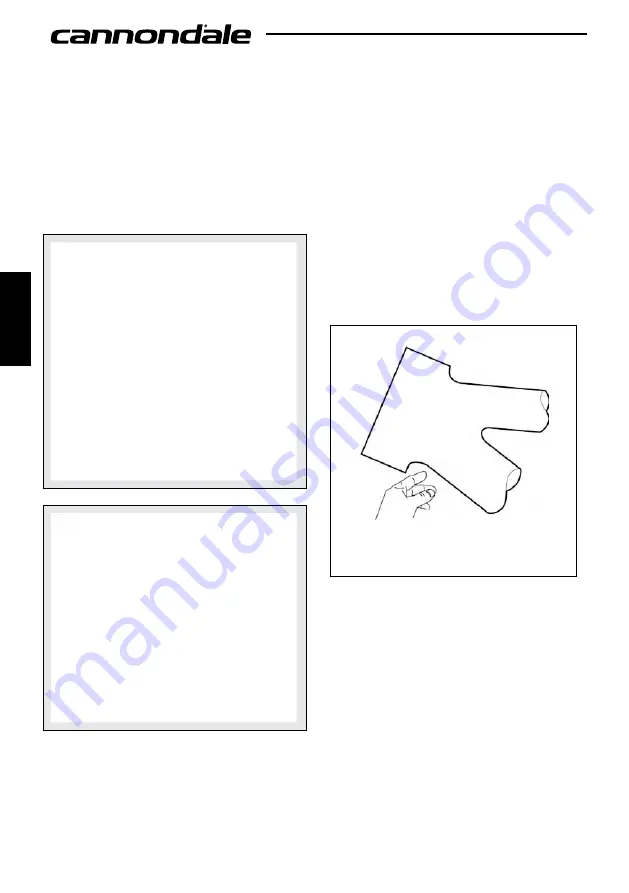
66
fatigue is not a Perfectly Predictable
science
Fatigue is not a perfectly predictable science,
but we can give you some general factors to help
you determine how often you need to inspect
(or have your retailer inspect) your bicycle. The
more you fit the “shorten product life” profile, the
more frequent your need to inspect. The more
you fit the “lengthen product life” profile, the less
frequent your need to inspect.
factors that shorten product life:
•
Hard, harsh riding style
•
"Hits," crashes, jumps, other "shots"
to bike
•
High mileage
•
Higher body weight
• Stronger, more fit, more aggressive
rider
•
Corrosive environment (wet, salt air,
winter road salt, accumulated sweat)
•
Presence of abrasive mud, dirt, sand,
soil in riding environment
factors that lengthen product life:
• Smooth, fluid riding style
•
No "hits," crashes, jumps, other
"shots" to bike
•
Low mileage
•
Lower body weight
•
Less aggressive rider
•
Non-corrosive environment (dry, salt-
free air)
•
Clean riding environment
aluminum frame inspection
. Clean the bike and remove the wheels.
. Inspect the whole frame carefully for cracks.
Pay particular attention to the underside of the
downtube where it intersects the headtube
3. Next carefully inspect the area where the
crankset and rear wheel come closest to the
right chainstay, particularly on the innermost
part of the chainstay and the outermost part of
the chainstay. Next look at the welds that join
all of the tubes. Be sure to look at the inside of
the rear triangle or swingarm while the wheel
is out, including the dropouts.
4. Finally check all mounting points such as disc
brake caliper brackets and water bottle and
rack mounts.
Figure .
toPtUBe
do
W
nt
UB
e
headt
UB
e
inspect this area for cracking
















































